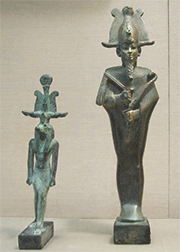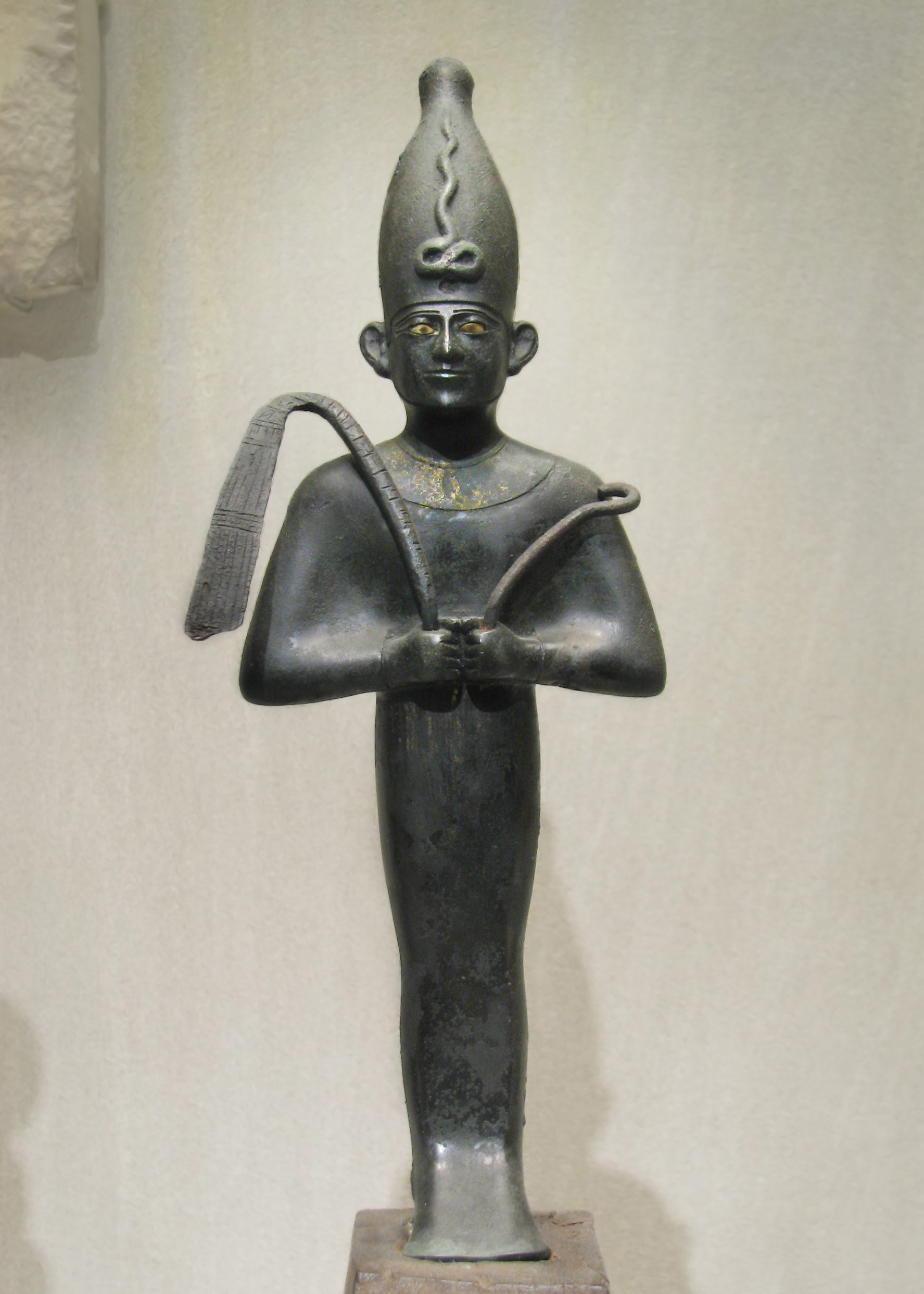Museum Website Description:
"This statuette was excavated at el-Hiba (or Teudjoi), a fortress town south of Herakleopolis, in Middle Egypt, and an important outpost at the northern limits of the Theban controlled part of the country from the late New Kingdom through the Third Intermediate Period. The site has not been thoroughly examined archaeologically, but the Theban High Priests (and sometime kings) seem to have had a residence at El-Hiba, and King Sheshonq I (r. ca. 945-924 B.C.) built a temple of Amun there. The statue is preserved on its original wood base, which bears a hieroglyphic inscription recording the name of the donor: "the Astronomer of the House of Amun Ibeb (Ibi), Son of the Astronomer of the House of Amun Ankhpekhered." The current glossy black surface is an artificial patination applied in the 1930s."

Sobek and Osiris at Chicago's Art Institute
  
|




